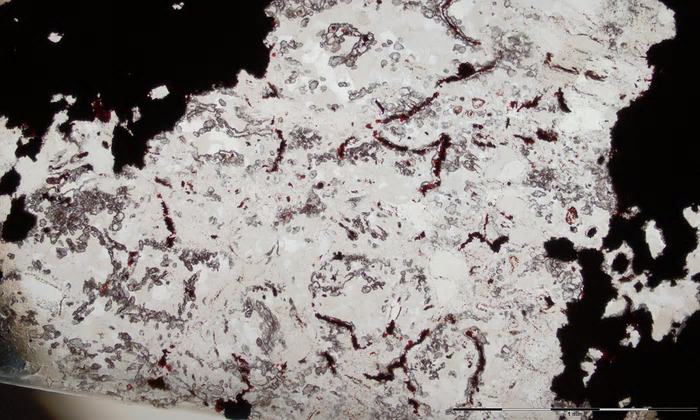The UK’s Guardian reported Oldest fossils on Earth discovered in 3.7bn-year-old Greenland rocks and, that’s right folks, the fossils are not 3.6 or 3.8 but specifically precisely 3.7 million years old! A good clue as to how the dating can be so very specific can be inferred from independent researcher and co-author of the research Clark Friend who stated “Up until now the oldest stromatolites have been from Western Australia and they are roughly 3,500 million (3.5bn) years [old].”
Well now, if you know that the oldest thus far are roughly 3.5 do you really want to find some that are younger than that? No, of course not. You want your name to be out there—cache and all of that; follow the grant money. So, claim that your find is older and get on with it.
About the rocks of the Isua supracrustal belt in southwest Greenland (which is no Earth, just in case) rocks, “The researchers believe the structures in the rocks are stromatolites – layered formations, produced by the activity of microbes, that can be found today in extremely saline lagoons in a few locations around the world.” So, basically, we are given proof that in 3.7 BILLION years stromatolites are still stromatolites, microbes are still microbes and that, of course, they “can be found today” which is how they are recognized in the first place: in other words, this is proof of lack of evolution.
But when discerning readers realize this what will be left of all of the hoopla? We are told that this find is “raising questions about life on Mars…raises questions about the possibility of life on other planets”—wait, what?!?! What to do when you, yet again, prove lack of evolution? Take a wild, hand waving smoke and mirror misdirection, tacit “Hey, look over there!” “Where?” “Outer space maaaaan—where, like, anything is possible!”
This brings us to why they are so very specific about the 3.7 billion year date because they specifically know that “Mars, for example, 3,700 million years ago was wet.”
Now, if you want to know the nature of the manner whereby science is (mis)handled by the news, teachers—and scientists—just ask your grandma what proofs for evolution were offered when she was in school, then ask the same of your mom and then ask the same of yourself and you will end up with a list of mistakes, hoaxes, frauds, jumping to conclusions based on the partial data de jour, etc.

Such is the case with Nick Lane’s statement dismissing previous so called “facts” (he is an evolutionary biochemist from University College, London), “This idea of the Earth as being bombarded by meteorites and, basically, volcanoes and [having] no water, has kind of evaporated” so you can tear those pages out of your textbook, your mom’s textbook and your grandma’s textbook. He continues directly with “so now we have a rather modern-looking planet with global oceans and some land going back several hundred million years before these fossils were found” which is convenient when you want to push the worldview-philosophy of stasis: the present is the key to the past and all of that anti-catastrophism stuff.
He also noted that “This is really just another piece of evidence that suggests that the world was far more comfortable” just like the story of Goldilocks and the Three Bears with Earth being “just right”—which it was but this is a new revelation for evolutionists. Or rather, this is what they are inventing in order to make their theory even remotely possible—which it still is not.
The University of Tennessee’s Robert Riding actually notes that “These examples underscore the problem that we really have not yet found sufficiently well-preserved very old – i.e., between 3500 and 4000 million (3.5 and 4bn) year – sediments to be confident that what we are seeing could definitely be regarded as stromatolites.”
University of Westminster astrobiologist, Lewis Dartnell notes, “These stromatolites don’t tell us much about the chemistry or environment of how life originally got started on Earth, but they do indicate the presence of biology in a shallow sea 3.7bn years ago.” Of course, being an astrobiologist, which is the study of nothing since there is no known astro biology, he has to go there, “The Martian surface today is very cold and dry, but around the time that these ancient layered rocks formed in Greenland, Mars was itself a much warmer and wetter, and thus habitable planet.” So, since he needs something to do with his abundant free time, he reasons that as Earth (is wildly guessed to have been) so Mars.
~~~~~~~~~~~~~~~~~~~~~~~~
A plea: I have to pay for server usage and have made all content on this website free and always will. I support my family on one income and do research, writing, videos, etc. as a hobby. If you can even spare $1.00 as a donation, please do so: it may not seem like much but if each person reading this would do so, even every now and then, it would add up and really, really help. Here is my donate/paypal page.
Due to robo-spaming, I had to close the comment sections. However, you can comment on my Facebook page and/or on my Google+ page. You can also use the “Share / Save” button below this post.
